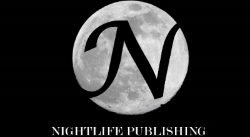by Gamal Hennessy
The vast majority of all
fictional plots boils down to a struggle to achieve a goal. A protagonist has
an object of desire that is material or situational. To get what she wants,
your heroine has to exert effort against everything that stands between her and
her goal. The power and intensity of her
obstacles will define both your heroine and the strength of your story. But
where do those obstacles come from and how can we build them into the story in
a way that tests the heroine in the most satisfying manner? One answer lies in
playing with the different levels of conflict.
Three Levels of Conflict
A level of conflict is a source of antagonism that stands between your protagonist and their goal. Robert McKee's book Story defines three major levels of conflict:
A level of conflict is a source of antagonism that stands between your protagonist and their goal. Robert McKee's book Story defines three major levels of conflict:
- Internal: where the thoughts, feelings or physical characteristics of a protagonist block achievement of the goal
- Interpersonal: where relationships with other people or groups block achievement
- Extra-personal: where institutions, natural phenomenon and situations block achievement
To put this into
perspective, let's say you're writing a story about a boy named Adam living in
Jerusalem. Adam has just seen a beautiful Arab girl and in that moment decides
that he is in love. What obstacles does Adam face in his quest for a
relationship? As a writer, you have several options:
- Internal: Adam's shyness, lack of experience with women and unattractive features get in the way of his budding romance.
- Interpersonal: The girl might resist his advances for her own reasons, or she might have another suitor who wants to remove Adam from the picture. Also, Adam's parents could try to prevent him from getting involved with an Arab girl. The girl's brothers might threaten him with violence. His own friends might reject him.
- Extra-personal: The wider Arab Israeli conflict could also inhibit our hero. Hezbollah bombings into the settlements could disrupt Adam's life or create a curfew situation. A suicide bomb could destroy everything or even kill the girl. Protests, strikes or other mass social events could tear their relationship apart before it even gets started.
This is just a few
examples of what Adam is up against. If he is able to win this girl's love, the
obstacles he'll have to overcome could make an amazing story.
The Different Directions
of Conflict
After you determine the conflict
against your hero, you have three main choices when deciding on the direction
you’d like to go with each one:
- Broad: where the protagonist has to deal with conflict on each level, either at once or simultaneously
- Deep: where the conflict is primarily on one level, but the impact on that level is this hammers at the core of the character
- Compound: where the conflicts are both broad and deep and the hero fights intense battles on all fronts to achieve their goal.
The direction you choose
is often a function of genre. An action adventure might have heavy
interpersonal and extra personal conflict when the hero battles the arch
villain on the top of a mountain in a blinding snow storm. A cozy mystery might
have strong internal focus as the detective quietly strains her intellect to
solve the crime. Every style of writing
can tap into each type of conflict, but some genres lend themselves to
specific conflict types.
Conflict as Spotlight
The best way I've found to develop conflict in
my work is to focus on the aspects of my protagonist that I want to reveal and
then creating conflicts that explore those traits. One of my main characters is a young woman
named Nikki. She wants the affection of her mentor and lover Chris. To show her
dedication to this goal, I put several obstacles in her path in the first
twenty five pages of the book.
Nikki has to deal with
the extra personal danger of spying on the Russian mafia for Chris. She has to
face the interpersonal roadblocks of abusive teammates. The internal doubt she
has about who Chris really is and her own feelings for him create the largest
source of conflict. As the story progresses, each level of conflict deepens and
interacts with the others to build a story that reveals Nikki's true character
as the narrative unfolds. (See Creating Complex
Characters)
The best stories have
the strongest conflicts. While it's not necessary to throw every obstacle at
every character in every story, a weak story is most often the result of weak
antagonists. Pit your heroine against the strongest combination of antagonism
that you can think of. Your readers will thank you for it.
Have fun.
Gamal
Gamal

